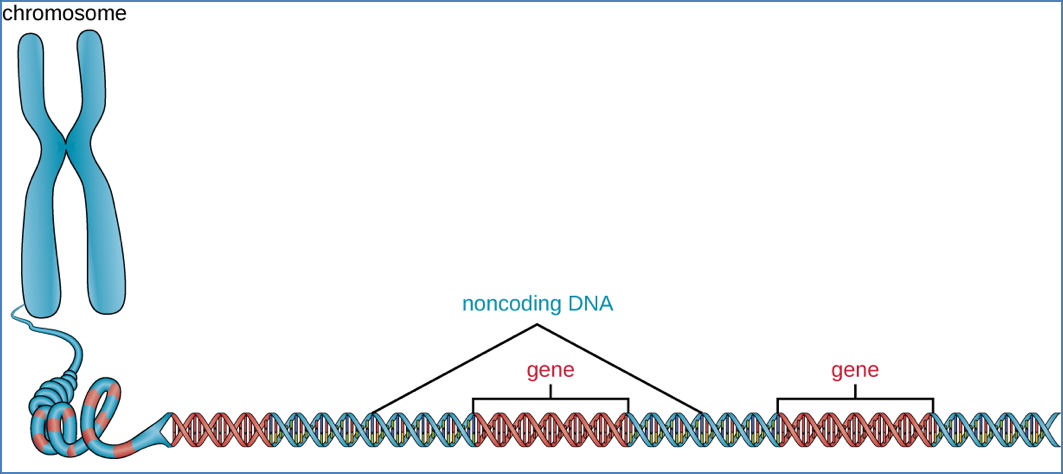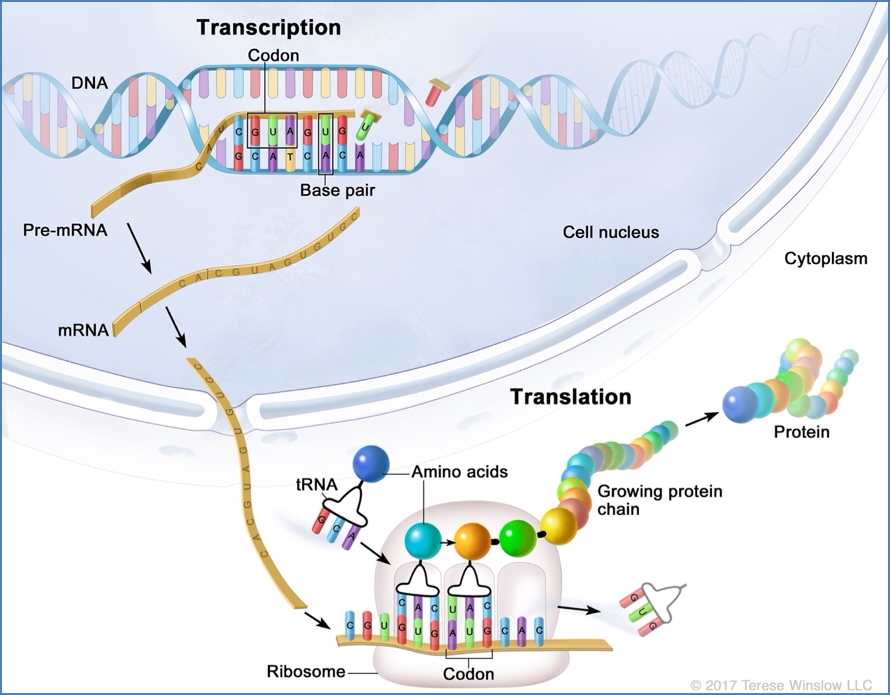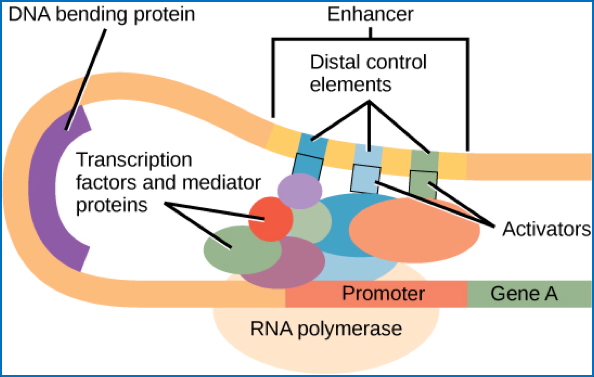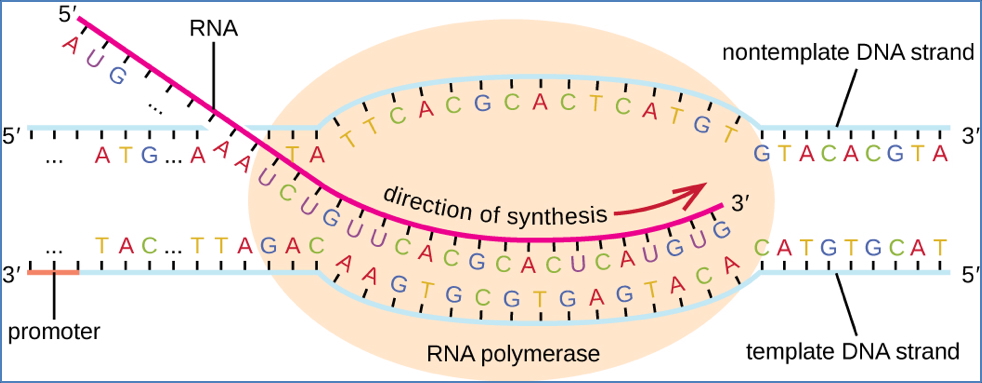Table of Contents
Overview – Gene Expression
Gene expression is the fundamental biological process by which the genetic code in DNA is converted into functional proteins. It occurs in two major steps: transcription, which produces RNA from a DNA template, and translation, which converts that RNA into a chain of amino acids to build a protein. These processes are essential for cell structure, function, and homeostasis, and they underpin nearly every biological response in human physiology and pathology.
What Is a Gene?
- A gene is a segment of DNA that encodes the synthesis of a specific protein (polypeptide chain)
- Genes contain both:
- Exons – coding regions that form part of the final mRNA and determine protein structure
- Introns – non-coding regions that separate exons and are removed before translation
Note: During RNA processing, introns are spliced out and do not contribute to the final protein product.


2. CNX OpenStax, CC BY 4.0 <https://creativecommons.org/licenses/by/4.0>, via Wikimedia Commons
From Gene to Protein
The two key steps in gene expression are:
1. Transcription
- Occurs in the nucleus
- DNA is used as a template to produce heteronuclear RNA (hnRNA)
- Before it can exit the nucleus, hnRNA undergoes processing:
- Introns are removed
- Exons are spliced together
- A GTP cap is added to the 5′ end
- A poly-A tail is added to the 3′ end
- The resulting mRNA (messenger RNA) exits the nucleus into the cytosol

2. Translation
- Occurs in the cytosol, primarily on the rough endoplasmic reticulum
- The ribosome reads the mRNA and assembles a polypeptide
- Each codon (3-base sequence on mRNA) corresponds to one amino acid
- tRNA (transfer RNA) delivers amino acids to the ribosome based on codon-anticodon pairing


Gene Transcription – Step by Step
Why It’s Necessary
- Allows the unpacking and reading of the genetic instructions in DNA
- Enables the synthesis of specific proteins when needed for life or homeostasis
What’s Required
- DNA (transcription unit)
- RNA polymerase
- Transcription factors
- ATP for energy
When It Occurs
- Any time a protein is needed — dynamically regulated by the cell
Process
- 1. DNA template contains a transcription unit and a TATA box in its promoter region

- 2. Transcription factors bind to the TATA box, helping RNA polymerase to attach

- 3. Initiation phase:
- Transcription complex forms
- DNA is unwound
- RNA polymerase begins synthesising RNA using ATP for energy
- 4. Elongation phase:
- RNA polymerase moves along DNA, unzipping ahead and rezipping behind
- Synthesises the RNA strand from the template
- 5. Termination phase:
- Upon reaching the terminator region, RNA polymerase detaches
- The new RNA strand is released

RNA Processing
Before mRNA can be translated, hnRNA must be processed:
- Splicing: Introns removed, exons joined
- 5’ GTP cap added for stability and ribosome recognition
- 3’ Poly-A tail added for nuclear export and transcript longevity
→ Resulting in mature mRNA, ready for translation

Gene Translation – Step by Step
Why It’s Necessary
- Final step in protein synthesis
- Converts genetic information into functional proteins
What’s Required
- Ribosomes (small and large subunits)
- mRNA transcript
- tRNA molecules, each with a specific anticodon and bound amino acid
- Free amino acids (20 total)
- Aminoacyl synthetase enzymes to load amino acids onto tRNAs
Process
- 1. Initiation:
- Small ribosomal subunit binds to start codon on mRNA
- tRNA carrying methionine (start anticodon) binds
- Large ribosomal subunit joins, forming the full complex
- Start tRNA occupies the P-site; the A-site is empty
- 2. Elongation:
- Next tRNA binds in the A-site
- Peptide bond forms between amino acids
- Ribosome moves down mRNA, ejecting the old tRNA
- Chain is transferred and extended by incoming tRNAs

- 3. Termination:
- Occurs when the ribosome reaches a stop codon (UAA, UAG, or UGA)
- A release factor binds to the A-site
- Hydrolysis releases the finished polypeptide
- Ribosomal complex dissociates

Summary – Gene Expression
Gene expression is the process by which genetic instructions are converted into functional proteins via transcription and translation. DNA is transcribed into hnRNA, which is processed into mRNA, then translated into polypeptides by ribosomes. This essential flow of genetic information enables all aspects of human biology. For a broader context, see our Genetics & Cancer Overview page.